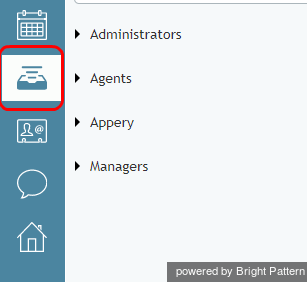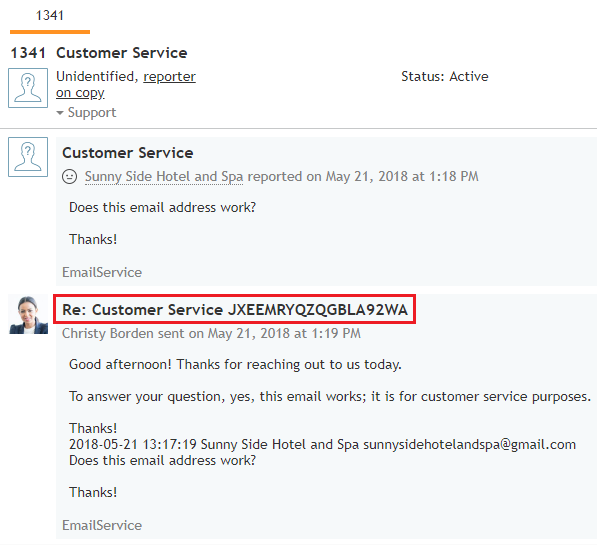(Created page with "電子メールで新しいリクエストが受信すると、ケースは、システムによって自動的に作成され、コンタクトセンター内でユニーク...") |
(Created page with "ケースを表示するには、エージェントデスクトップの ''マイ・ケース''を選択します。") |
||
| Line 9: | Line 9: | ||
| − | + | ケースを表示するには、エージェントデスクトップの ''マイ・ケース''を選択します。 | |
Revision as of 14:39, 22 October 2018
電子メール/ケースおよびスレッドの説明
各電子メールは、ケースに関連しており、スレッドの一部である場合があります。ケースとスレッドの説明は以下の通りです:
ケース
ケースとは、特定の顧客リクエストに関連するすべての対話を追跡するために作成される顧客向けのサービスの一つです。ケースは、リクエスト受信時に作成され、そのリクエストが処理されている間はアクティブなエンティティとして取り扱われ、リクエスト処理の終了後に終了します。
電子メールで新しいリクエストが受信すると、ケースは、システムによって自動的に作成され、コンタクトセンター内でユニークな番号が割り当てられます(14355など)。ケース番号は通常、お客様にも伝えられるため、今後の対話においてお客様もエージェントもこの番号を参照にご利用いただけます。さらにこの番号を使うと、電子メール履歴から、ケースに関連するすべてのデータが簡単に抽出できます。
ケースを表示するには、エージェントデスクトップの マイ・ケースを選択します。
A case is closed when you assign a final disposition to an email associated with this case. A final disposition is a disposition that indicates that no further follow-up is expected or necessary for the given case (e.g., the customer has confirmed request fulfillment). Dispositions are fully customizable and can often be service-specific. Your system administrator will explain how to use dispositions and point out the ones that can be used to close cases.
Threads
A group of emails related to the same case is called an email thread. Threads are created when the system matches in-reply-to email headers. Additionally, when you reply to a customer’s request for the first time, the system will generate a unique thread identifier and attach it to the email subject. Unlike the case number, the email thread identifier may contain both numbers and letters (e.g., JXA6PDRNQ2SO) and is intended primarily for automatic processing.
For example, when a new email comes in, the system will analyze the subject to see if there is a matching email header. If a matching header is found and recognized, the system will automatically assign that email to the corresponding case. Depending on your service configuration, the system may also attempt to deliver that email to you if you have previously worked on this case.


